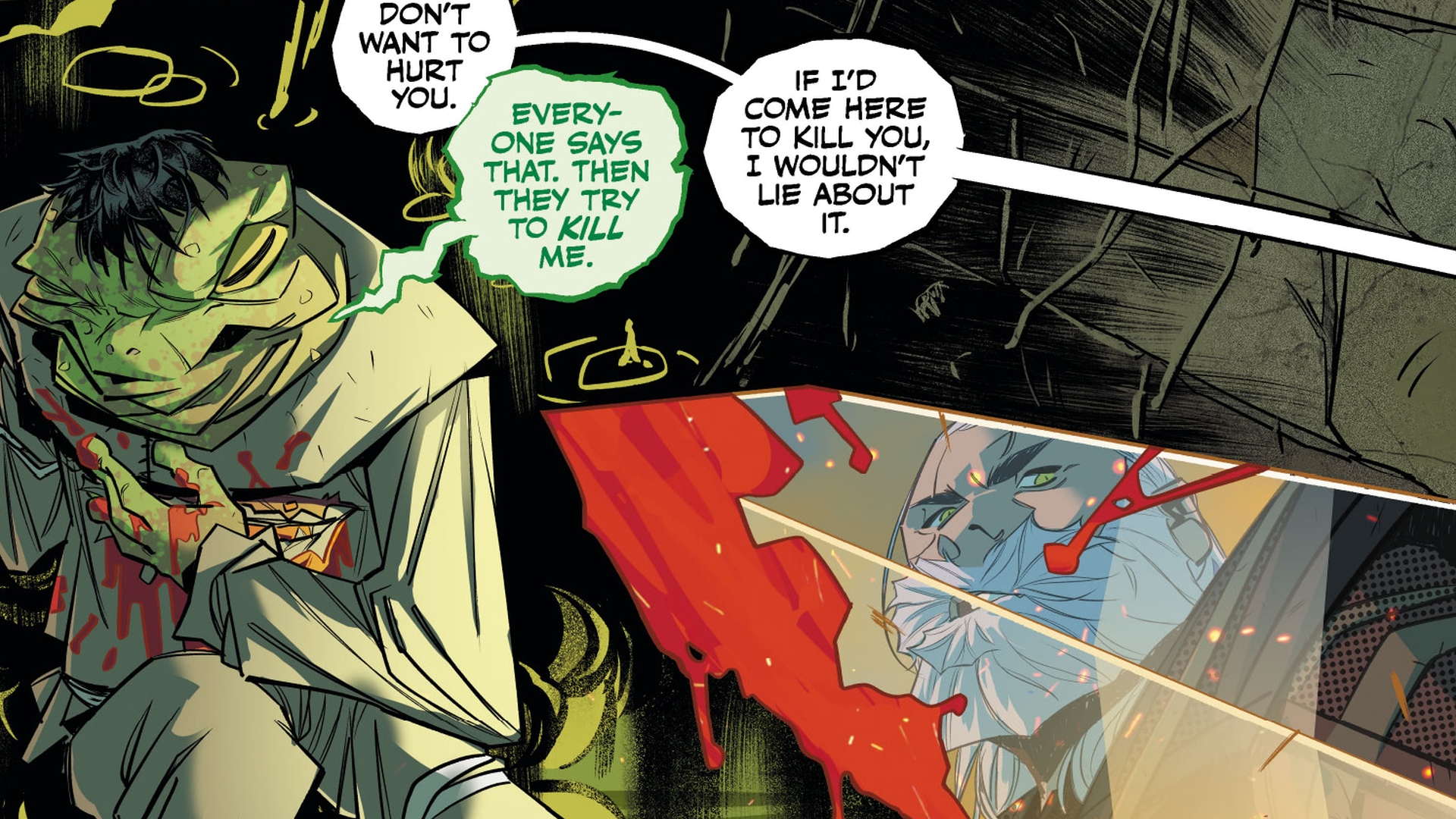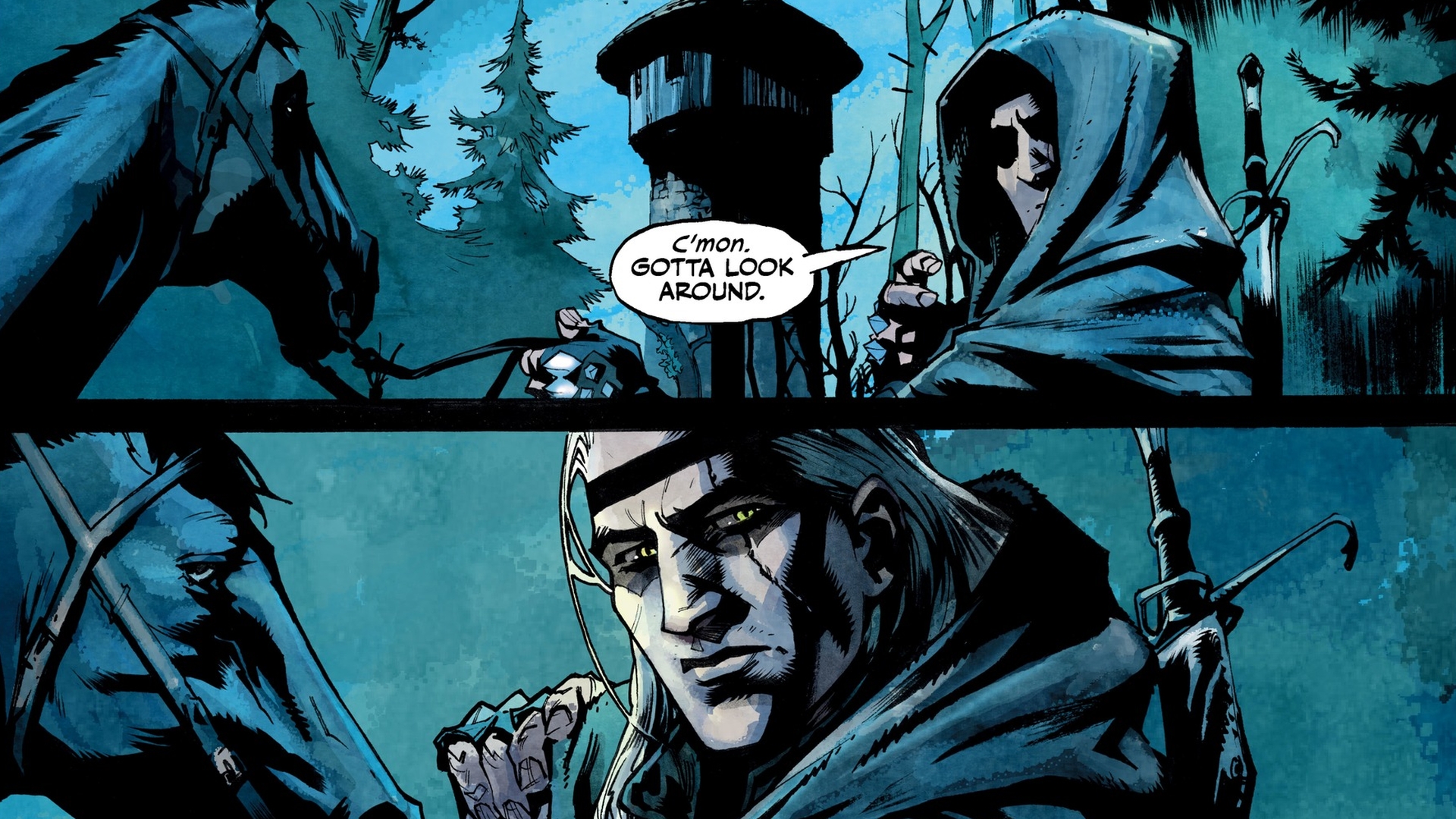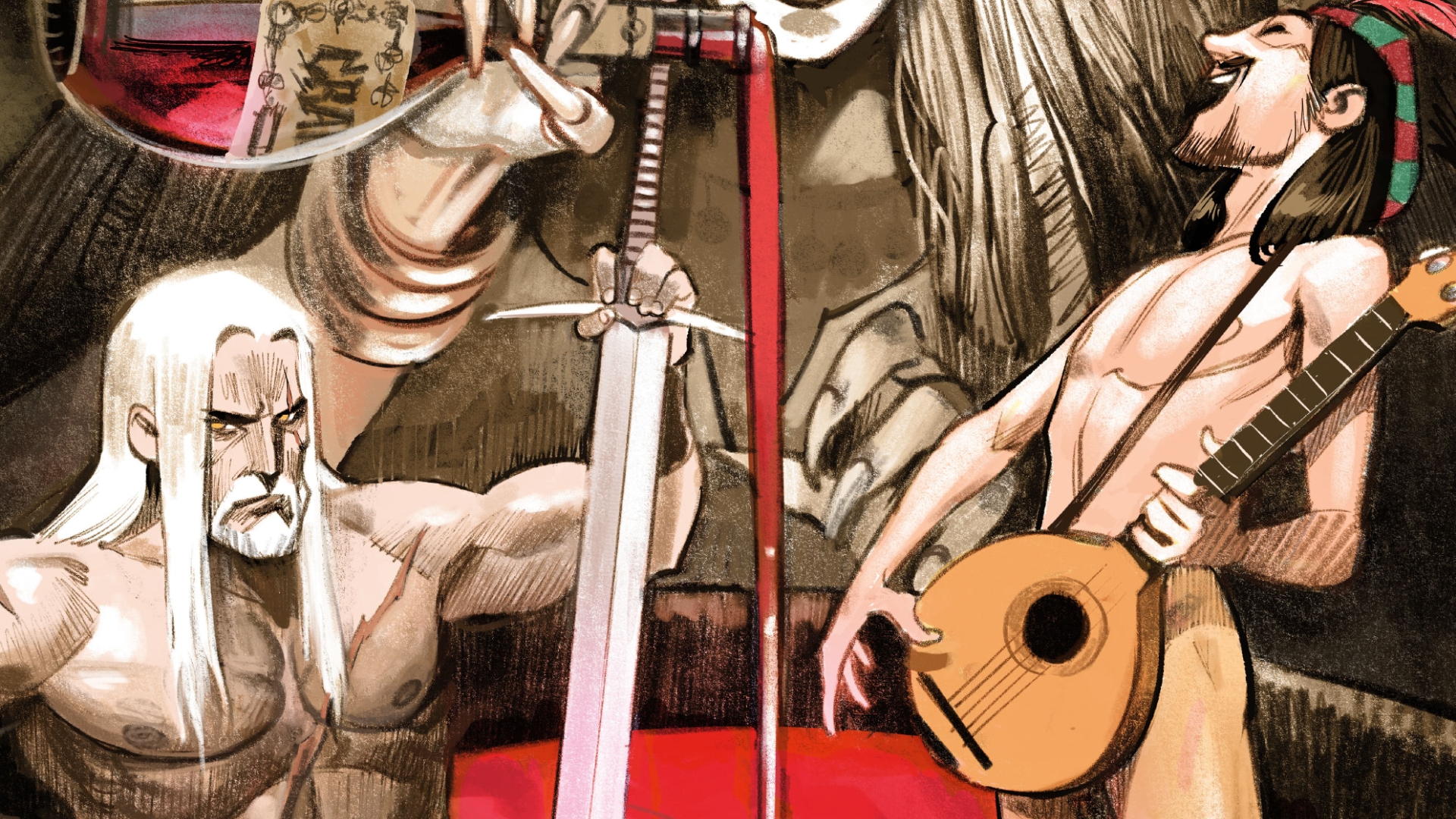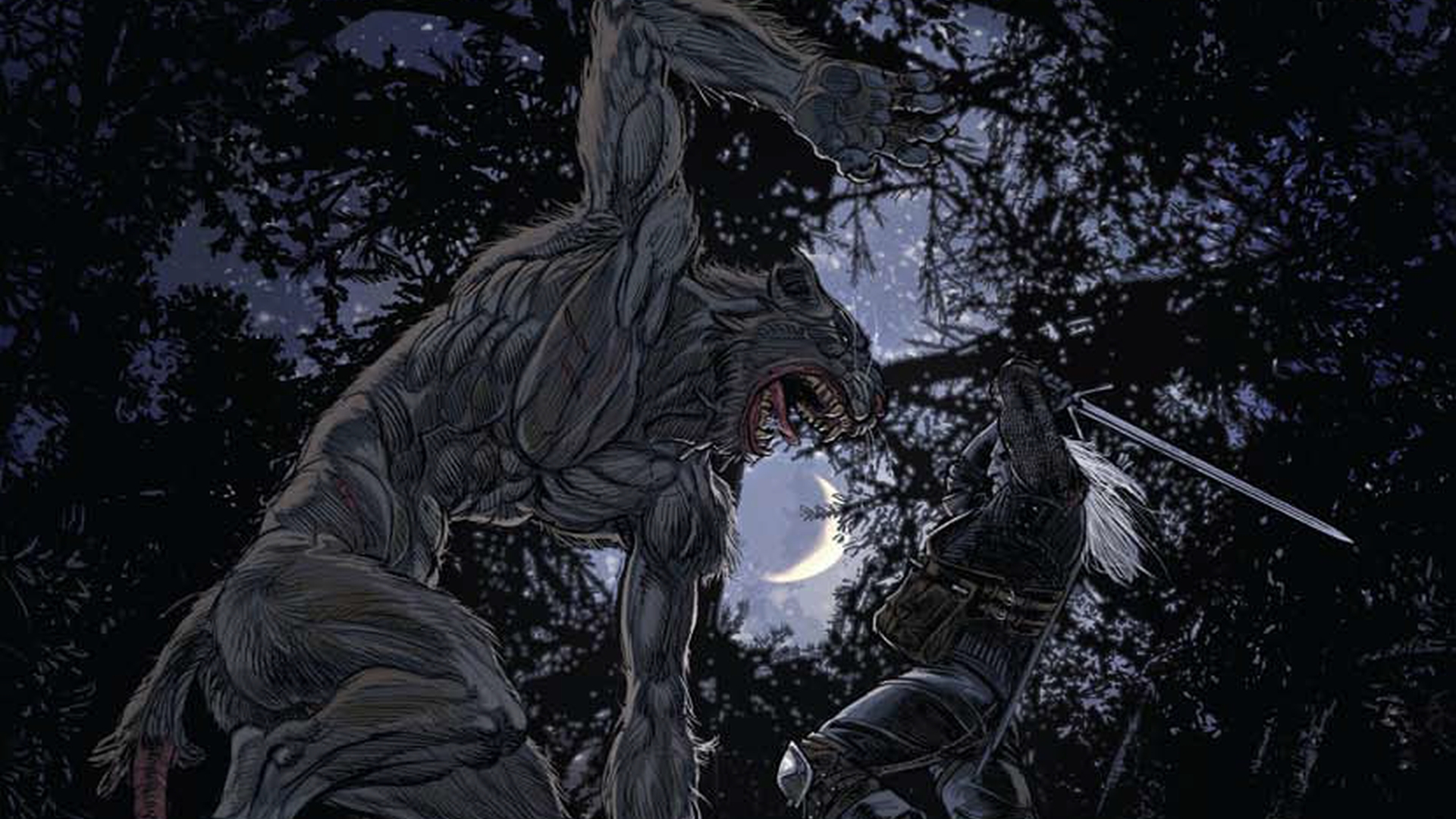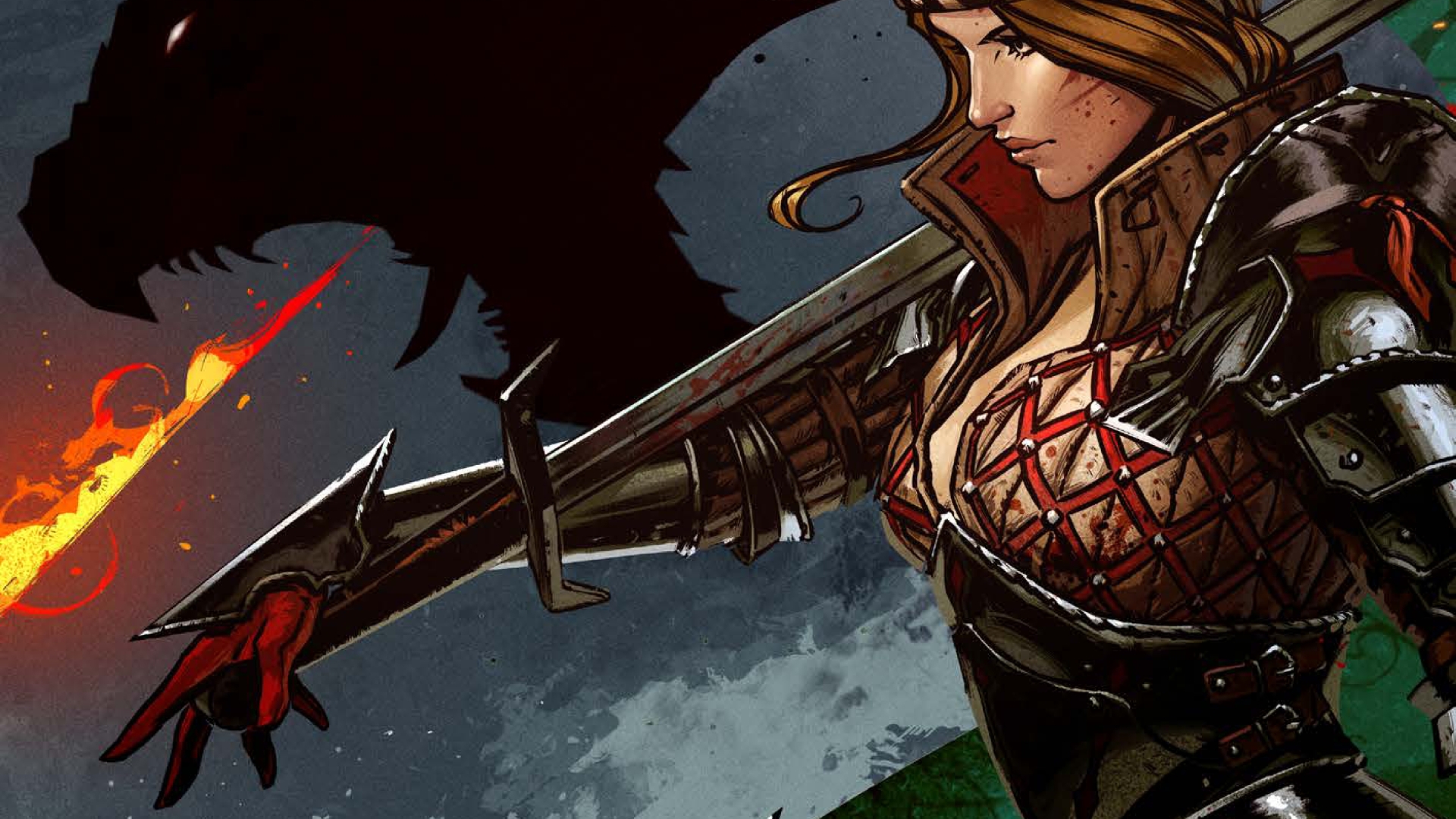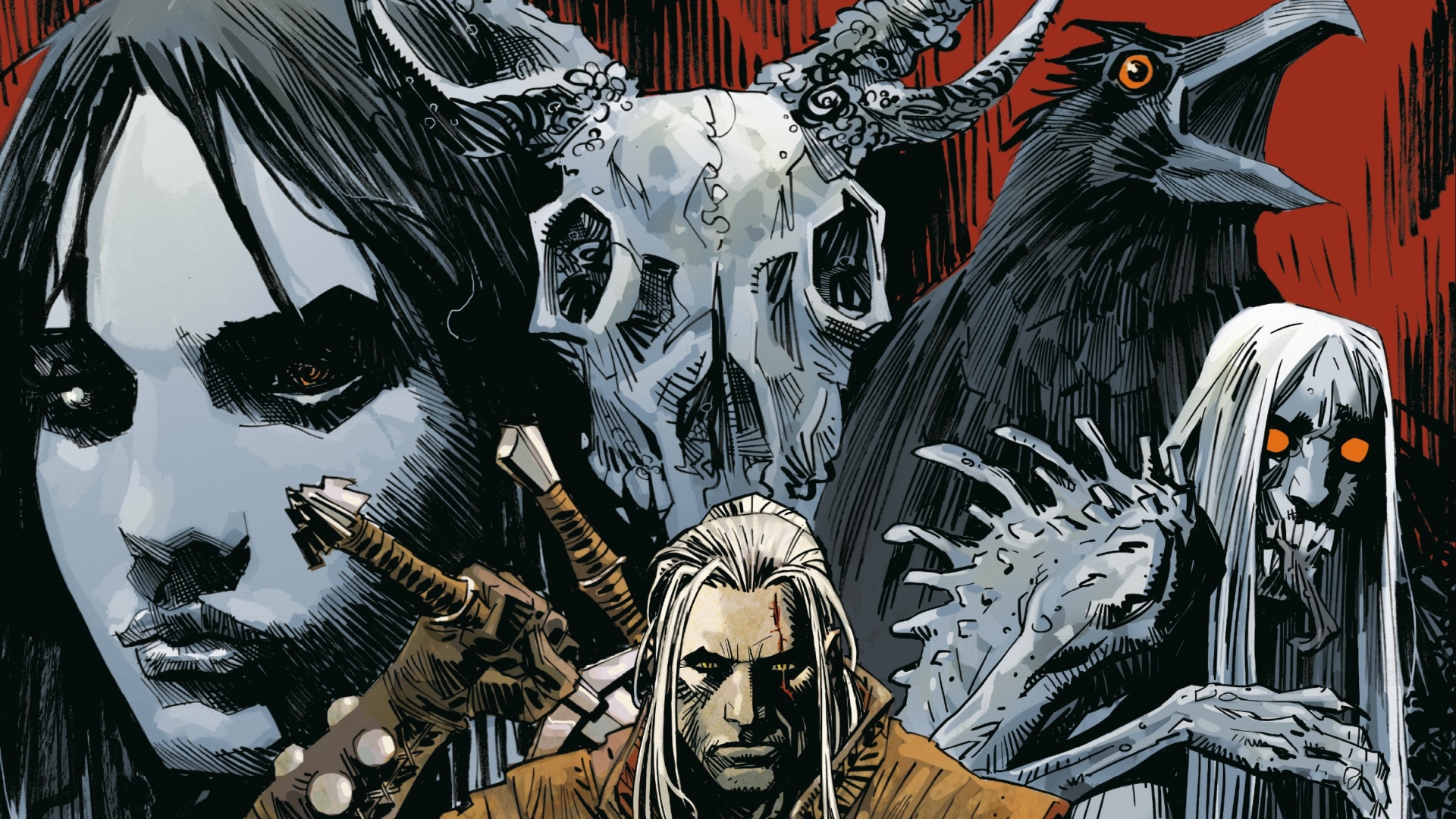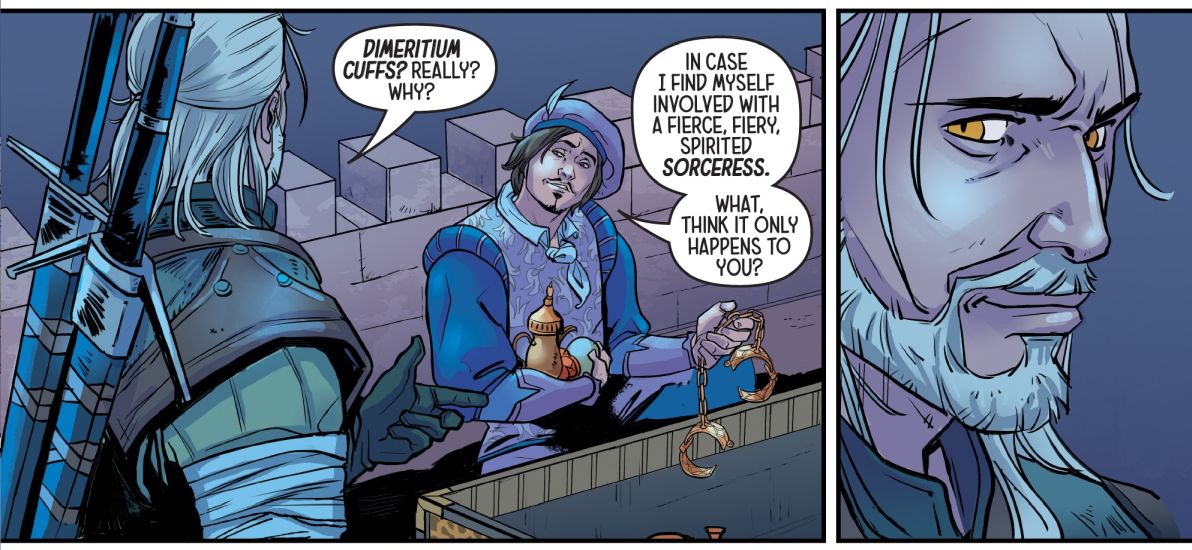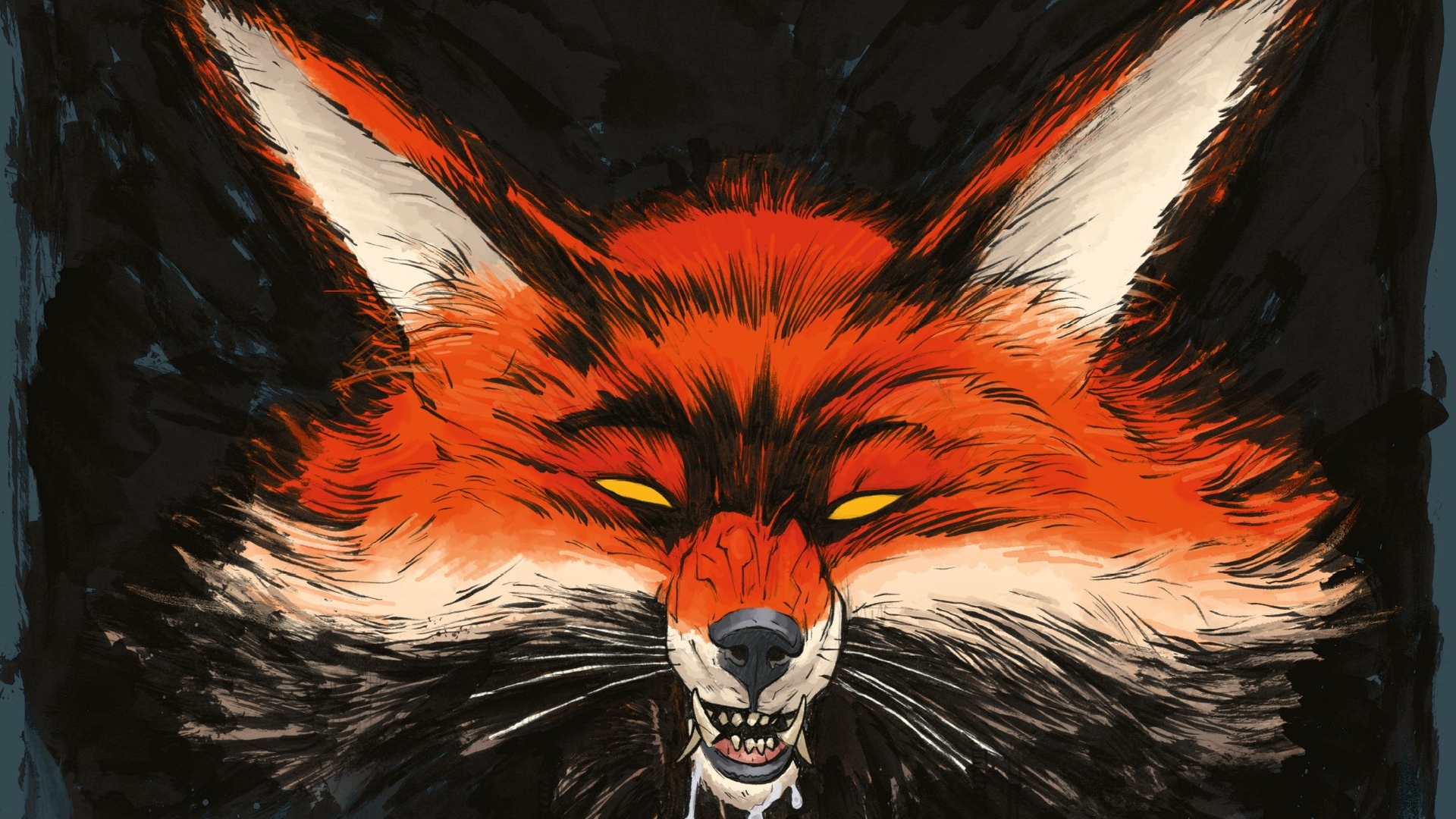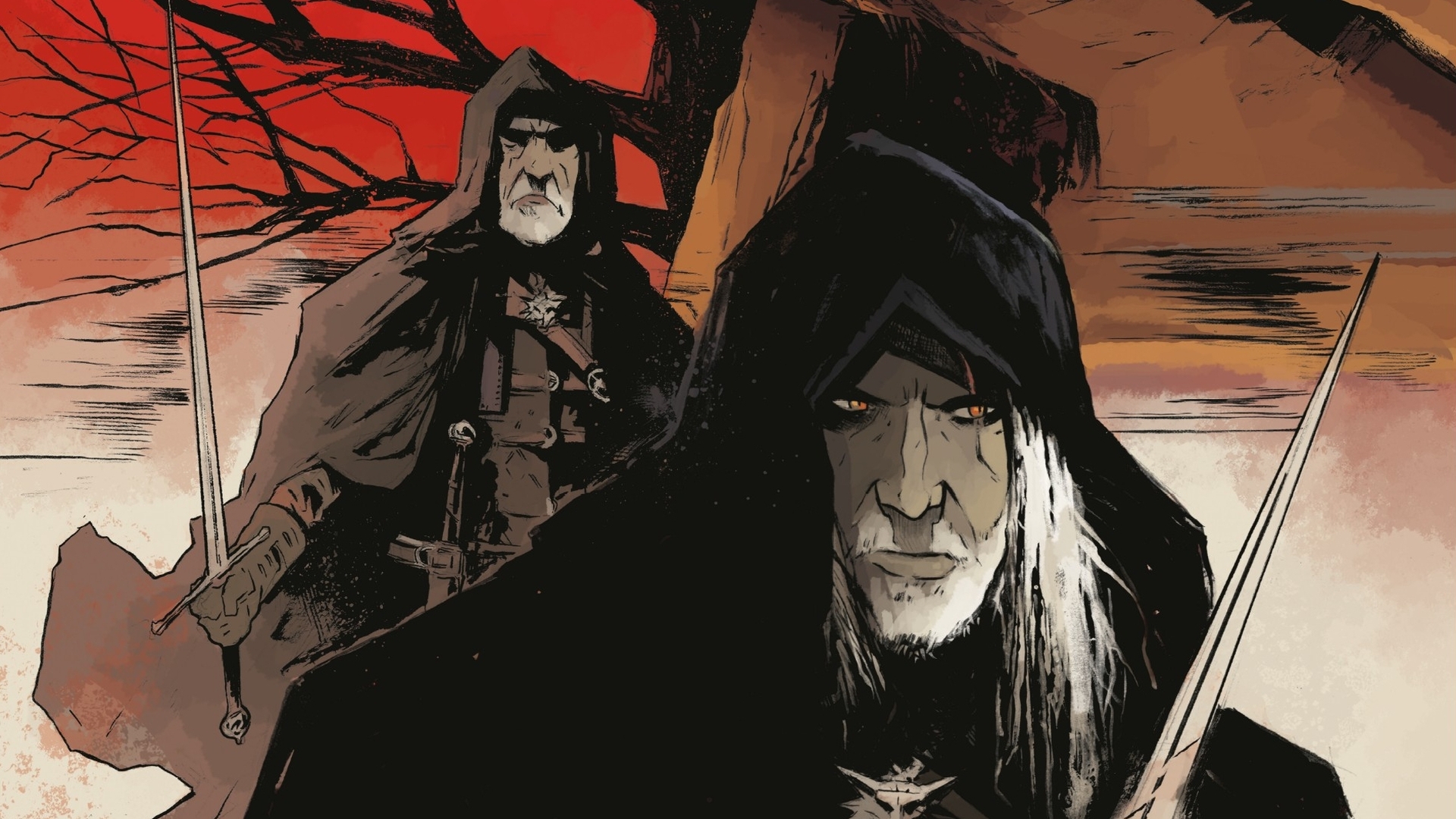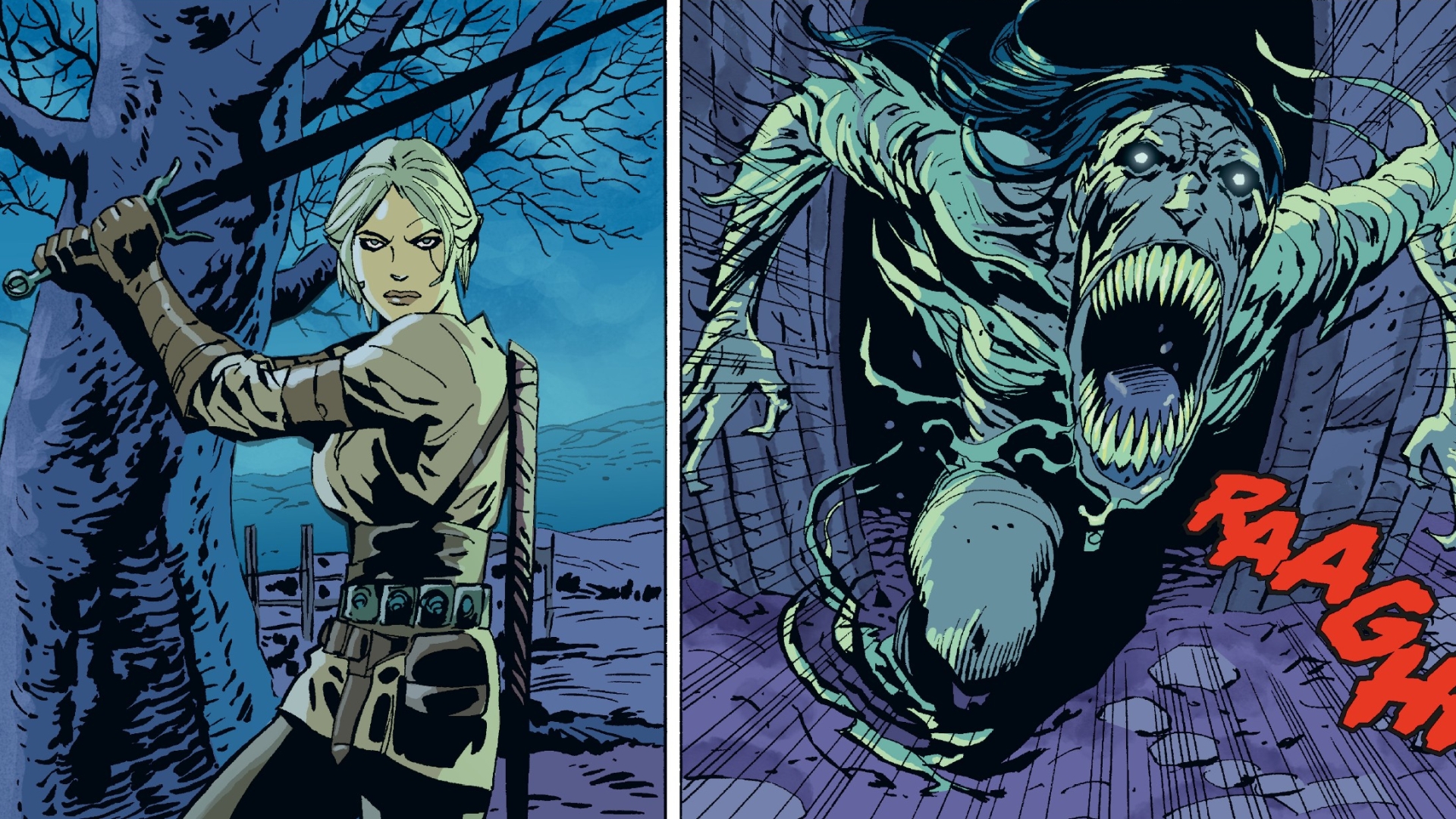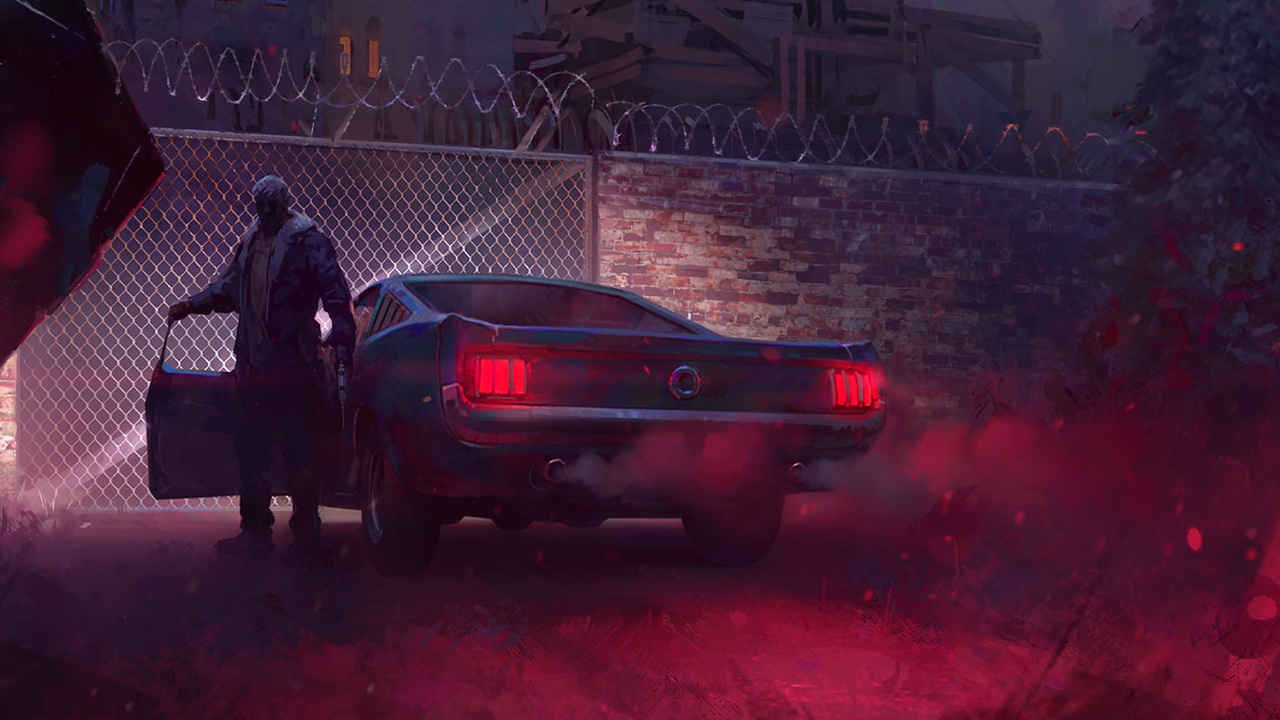The Witcher comics ranked from worst to best
Geralt's enjoyed plenty of adventures in the pages of comic books as well as books, games, and TV.
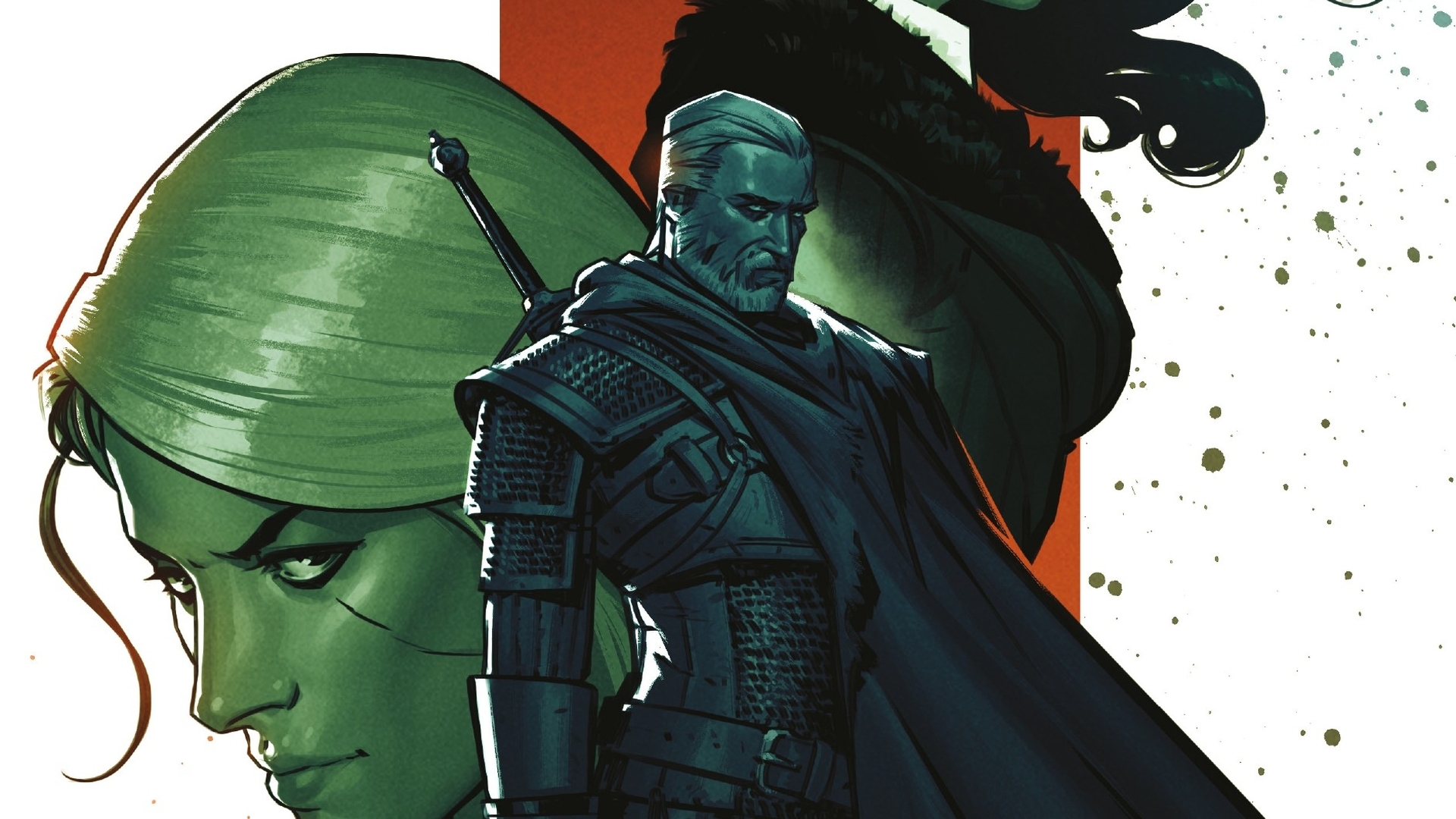
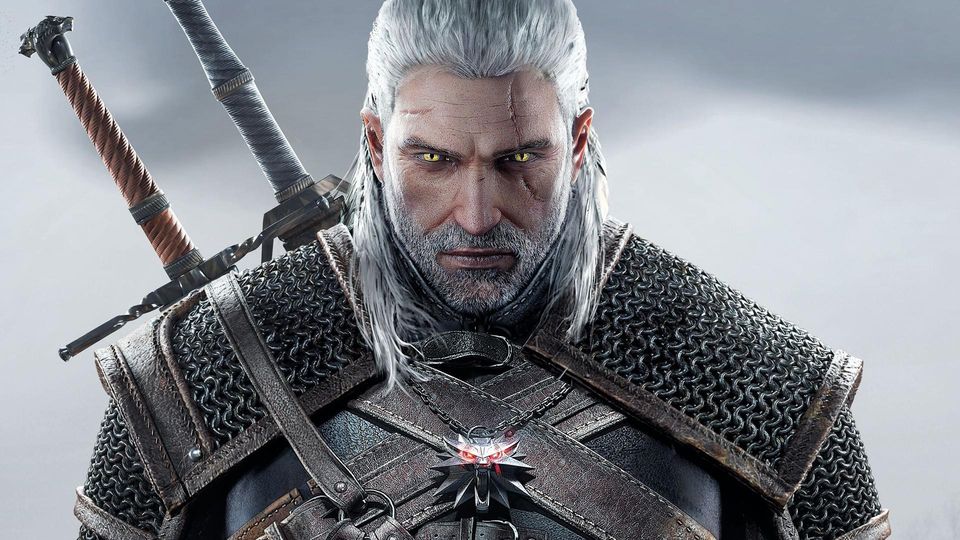
The Witcher 4: What we know
The Witcher Season 3: Trailers and cast
The Witcher Season 3 Vol. 1 review: Cavill's goodbye
Witcher 3 mods: Good hunting
The Witcher books: Where to start
In one of the collections of Witcher comics there's an interview with Borys Pugacz-Muraszkiewicz, a lead writer at CD Projekt Red, where he talks about the influence comics had on the videogames. When the team were coming up with their bible for the first Witcher game, setting down the basics of tone and so on, they decided to give Geralt the abrupt speech patterns of a comic book character. Borys doesn't name names, but Game Geralt always made me think of Wolverine. If you've read the books you'll know that Geralt there can be quite garrulous, while in the games he talks like a man allergic to prepositions. In the comics based on the games based on the books Geralt speaks with that same terse style, and it feels like a homecoming.
The stories in videogame comics are usually irrelevant filler—with exceptions like Team Fortress 2, of course—but because the Witcher games embrace sidequests, imbuing the workaday monster-hunting Geralt does with as much significance as the main plot, the better spin-offs don't feel trivial. Think of these as sidequests no less fun or worthwhile than that one with the talking pigs or the one where Geralt gets drunk and wakes up with a tattoo, and you'll be coming at them from the right direction.
Andrzej Sapkowski's books survived being adapted for games and for TV and they make for pretty decent comic books as well. Here they are, ranked from worst to best.
Fading Memories
The times, they are a'changing. When monsters aren't as common as they used to be, what's a monster-hunter to do? Geralt goes fishing, like every character in an open world game eventually must. Of course, he can't stay away from witchering for long, taking on a contract that's morally complicated and thankless and at the end of which the real monsters are, sigh, going to turn out to be people, aren't they?
Fading Memories rehashes themes the books and games have already dealt with, which would be OK if it rehashed them with a little more flair. Instead it's plain as flour, though the occasional panel is composed well enough to stand out.
Witch's Lament
After capturing a witch who is then burned to death, Geralt feels guilty and soon ends up in a weird kind of psychological healing circle run by more witches. It's a witch-heavy story this, one that explores Geralt's relationship with women but in the end doesn't have much to say about it, falling back on ambiguity and wilful vagueness.
The scenes where the therapy witches talk in a mix of esoterica and psychology jargon about "breakthroughs" and "process", applauding as their patients "open up, emotionally", are kind of amusing, though the knotty, sketchy art feels mismatched.
Keep up to date with the most important stories and the best deals, as picked by the PC Gamer team.
Frog Kiss
A 10-pager packaged into one of Dark Horse's 2023 Free Comic Book Day anthologies, this take on The Princess and the Frog might have made a decent Novigrad sidequest, but doesn't have enough space here. It quickly hops through a handful of plot points then ends without consequence for the characters. It's yet another story of someone lying to Geralt in an attempt to get him to kill all their problems, minus the satisfaction of seeing them get theirs good and proper at the end.
Geralt's drawn with a real rough-around-the-mouth beard in this story, like his facial tapestry has been tangled into some kind of squid shape. Which would save him from being kissed by any frogs, at least.
A Grain of Truth
Most of the Witcher comics rely on the videogames for their inspiration, to the point of depicting Geralt in the Kaer Morhen starting armor with the shoulderpads more often than not. A Grain of Truth goes back to the books to give us a Geralt who shaves and wears a headband in a straightforward retelling of an early short story based on The Beauty and the Beast.
Occasional videogame touches sneak in around the edges, like a scene where Nivellen, the Beast, is ridden around by one of his Beauties being depicted like the Gwent card. It's pretty faithful to the short story overall though, especially compared to the episode of the Netflix series broadcast only months before this comic was published. Which is why it can't help but feel redundant. If you're the kind of cranky internet man who needs something to point at when you say "this is how it should have been done" it serves a purpose, but I liked the Netflix version better and if I want to reread the short story I'll just do that.
The Ballad of Two Wolves
In the opening pages of this four-issue series, Dandelion makes fun of Geralt's recent adventures for being boring. He's not wrong; previous Dark Horse miniseries Fading Memories and Witch's Lament were both duds. The Ballad of Two Wolves is a change of pace, returning to the classic "fractured fairytale" Witcher story by blending together Little Red Riding Hood and The Three Little Pigs. (Hasn't Geralt been through a twisted version of Red Riding Hood before? Yep, in a Witcher 3 sidequest called Little Red, then again in Blood and Wine, which also references The Three Little Pigs.) The town of Grimmwald is practically besieged by fairytales, and as usual it's up to Geralt to get to the bottom of it.
As well as flirting with the local sorceress, of course, and enduring Dandelion's attempts to drum up business by painting his grubby, squalid work in a more flattering light, papering over the fact everyone's dark secrets come out along the way. What makes The Ballad of Two Wolves better than the comics it follows on from is that Geralt's at his best when his grumpalump outsider act is contrasted with the supporting cast who love him.
Ronin
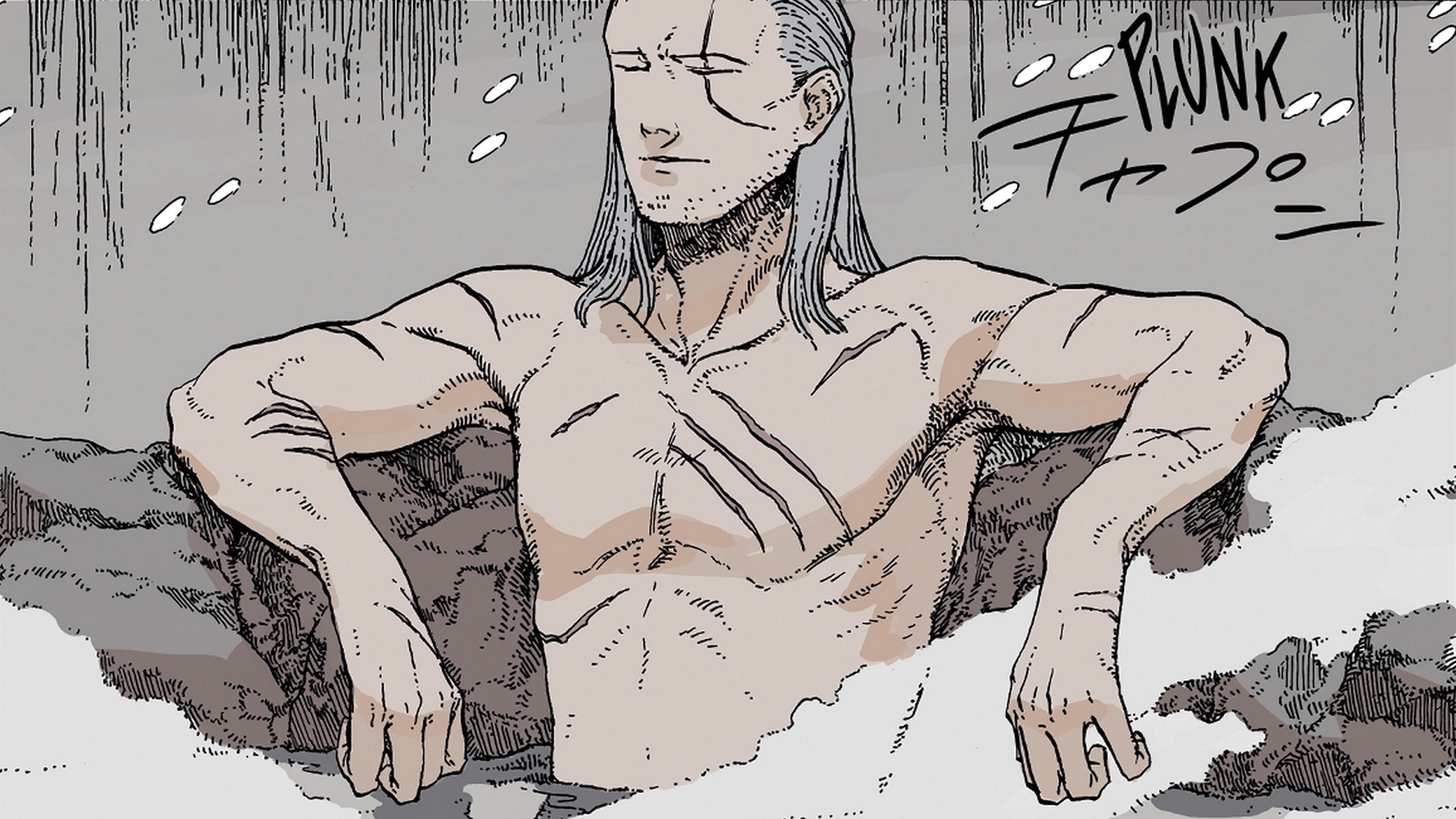
This Witcher manga swaps Slavic folklore for Japanese, making Geralt an outlaw samurai who hunts yokai across a land inspired by the Edo period. Each chapter features a different creature of myth, like the kappa, tengu, and nekomata, but they're all steps on Geralt's quest to find a mysterious woman. The story and characters are, like the setting, tweaked enough to render them unfamiliar and exciting.
In both art and structure it's like Yuki Urushibara's wonderful series Mushishi, in which an itinerant mystical detective wanders from village to village lifting curses and solving problems. However, while Mushishi only has one "backstory" chapter per volume, each chapter in Ronin is part of a larger story that's only revealed at the end, at which point it stops with a sudden "End of volume 1." A second volume has yet to be announced.
Reasons of State
With a story of cursed nobles, secret love, and revenge played out over multiple generations, Reasons of State feels a lot like one of the early Witcher short stories. In those stories the explanations of the local nobles' history could sometimes drag on and that's exacerbated here by pages filled with word balloons that are overstuffed with exposition in an ugly font that bumps up against their edges. The action-packed conclusion is a satisfying finish, but you might wish you had a family tree to keep it all straight.
(If you own The Witcher 2 on GOG you'll already have a pdf copy of this in your downloads and extras. If you own The Witcher 3 there you'll have an interactive version.)
Matters of Conscience
Set after The Witcher 2, Matters of Conscience is a short tale that picks at some of the second game's loose ends. It's mainly about what happens to the settlement of Vergen if you left it to be ruled by the shapeshifting dragon Saskia. (If you murdered her instead that's not treated as canon, sorry.)
And while Matters of Conscience does tie up loose ends, and features some entertaining swearing from a cast of dwarves including our old mate Yarpen Zigrin, it's really just another monster hunt. The art's competent, though focused more on making sure you can see Saskia's chest as often as possible than what's going on around her. Admittedly Sapkowski rarely wrote a woman whose "assets" he didn't describe in detail so I suppose that's apt.
Once Upon a Time in the Woods
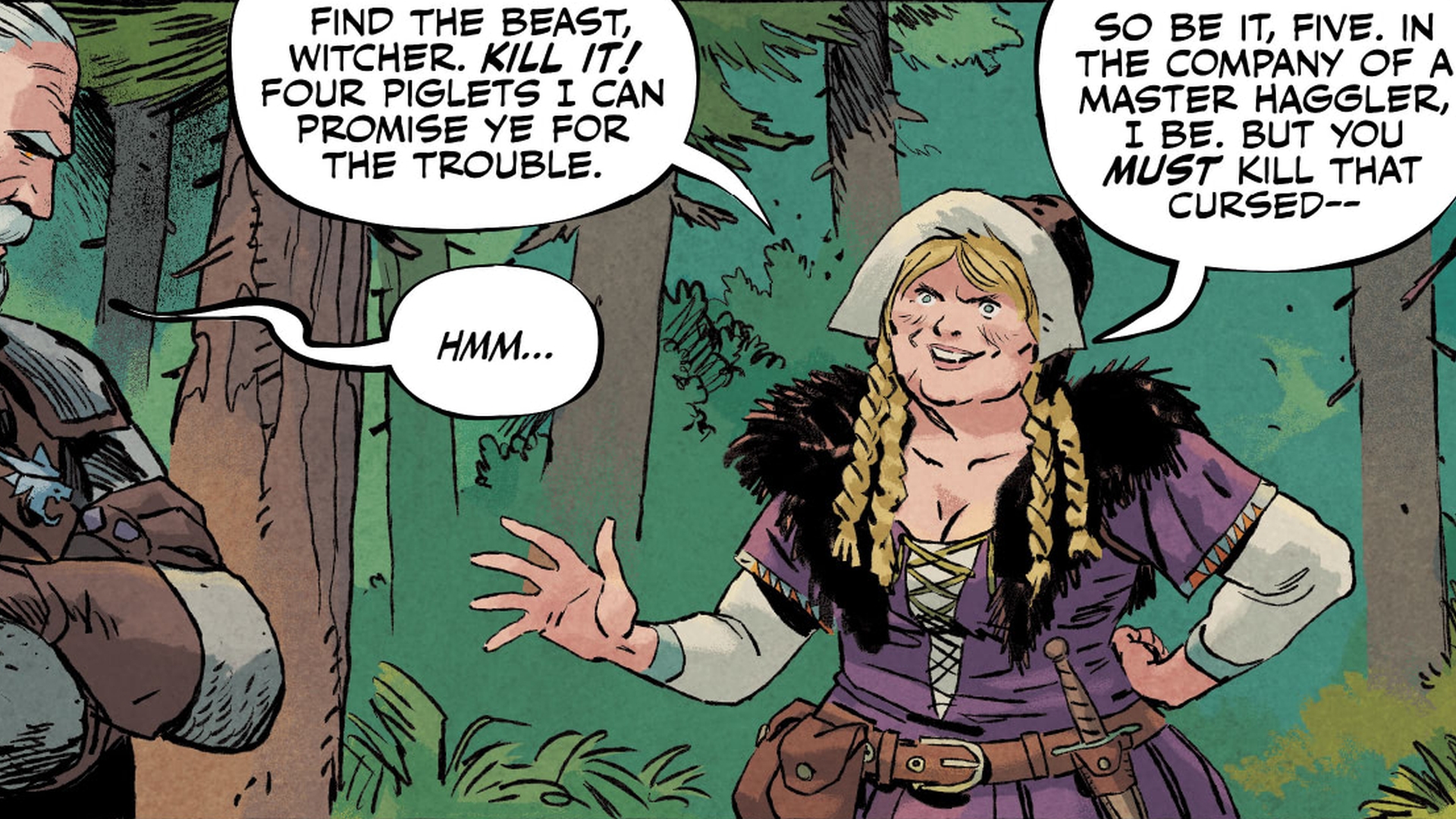
Another 10-pager from a Free Comic Book Day collection, Once Upon a Time in the Woods is a self-aware parody of the typically convoluted Witcher sidequest. What begins with a simple stolen pig escalates into a showdown that's comically intense for such a trifling thing. It's a good joke, even if the punchline falls kind of flat.
House of Glass
The House of Glass is a cursed place, all stained glass and decay, which Geralt and a haunted hunter find themselves trapped in. This twisty story throws in four different monsters, which means that when it does the typical Witcher thing of asking who the real monsters are, the answer's not too obvious.
Mike Mignola's art graces the covers of a few Witcher comics, though sadly not the interiors. The Hellboy art style would be a perfect fit, and sometimes the internal artists of Witcher comics do sneak in a few Mignola mannerisms. That's especially true of House of Glass, which uses frequent silent panels and close-ups of dead faces as pacing. Though it doesn't feature quite as many random statues or Geralt falling through any floors, it's definitely got a bit of that Hellboy vibe.
Of Flesh and Flame
Dandelion and Geralt go on a wild adventure to Ofier, the Middle Eastern corner of the Witcher world. It uses the pseudo-Arabic setting to tell a rollicking story of courtesans, djinni, and a magical flying trunk. Fittingly for a story that features the whimsical peacocking bard Dandelion, Of Flesh and Flame has an arch tone, more likely to feature a close-up panel of a raised eyebrow than a dead body's staring eye socket.
While other artists tend to reinterpret the characters in their own style, here they look like they stepped right out of the games, which this story dovetails into. There's even a reference to a specific quest involving the Ofieri from the Hearts of Stone expansion.
Fox Children
Fox Children is based on a section of the novel Season of Storms, but it feels a lot like the kind of quest videogame Geralt picks up. You can practically see the moral pivot points where he has to make a big decision.
Geralt joins a riverboat journey with a group who say they're out to rescue a girl who has been kidnapped by a vulpess or aguara—a kind of fox creature—but of course nothing is as it seems. The journey down a river beset by illusions is rendered ominously, but at the same time there's also a comedy bit with a troll that's an absolute riot. The comic makes some changes from Sapkowski's original, but just between us I think they're improvements.
Killing Monsters
Killing Monsters is a short comic that takes place between the second and third game—in fact it ends right where a particularly memorable trailer for The Witcher 3 begins. Geralt and Vesemir are searching for Yennefer, Nilfgaardian troops are occupying the towns, and there are still monsters out there in need of a good killing.
It opens with a scene where Geralt dodge-rolls beneath an attacking griffin in a cute nod to how the games actually play. Like the trailer, it's a punchy and effective introduction to The Witcher's world, and its sense of justice.
Curse of Crows
Curse of Crows sets out to reconcile the Geralt of the books and the games. It takes place after The Witcher 3 and establishes a canon in which Yennefer's his chosen romance and Ciri becomes a witcher—the montages of the two witchers working as they travel are particularly spot-on. But it's also about a hunt for a striga that leads Geralt to retell the story of how he once sought to undo a striga's curse at the behest of King Foltest of Vizima in the first Witcher story Sapkowski wrote.
It's gratifying to see flashbacks to young, clean-shaven Geralt followed by scenes of older, bearded Geralt at his most fatherly, proudly watching Ciri beat up some thugs in the street (or the two of them killing a werewolf then immediately looting it of potion ingredients). Curse of Crows is a real "how far they've come" kind of story, and the only thing to dislike about it is that it has to end. I'd happily read another five books of Dad Geralt adventures.

Jody's first computer was a Commodore 64, so he remembers having to use a code wheel to play Pool of Radiance. A former music journalist who interviewed everyone from Giorgio Moroder to Trent Reznor, Jody also co-hosted Australia's first radio show about videogames, Zed Games. He's written for Rock Paper Shotgun, The Big Issue, GamesRadar, Zam, Glixel, Five Out of Ten Magazine, and Playboy.com, whose cheques with the bunny logo made for fun conversations at the bank. Jody's first article for PC Gamer was about the audio of Alien Isolation, published in 2015, and since then he's written about why Silent Hill belongs on PC, why Recettear: An Item Shop's Tale is the best fantasy shopkeeper tycoon game, and how weird Lost Ark can get. Jody edited PC Gamer Indie from 2017 to 2018, and he eventually lived up to his promise to play every Warhammer videogame.

